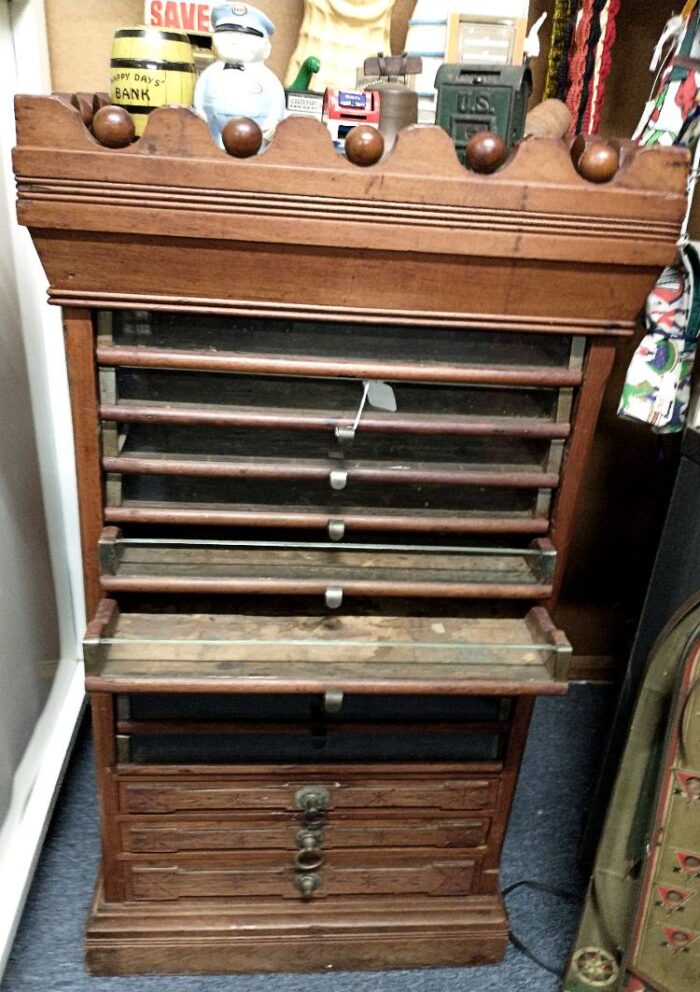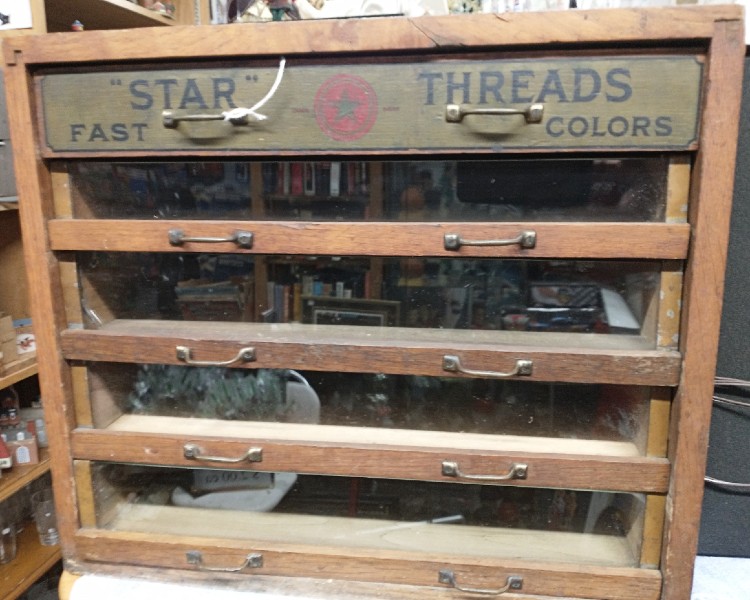Well, maybe you don’t like to sew. But these thread cabinets could easily be upcycled for any unique project you might have.
DID YOU KNOW THREAD SPOOLS WERE ONCE RECYCLED?
It was not until about 1800 that manufactured cotton thread was available to the hand sewers in the United States and Europe. Before that, textiles were sewn with silk or linen thread, and rarely homespun cotton or wool thread. At first, they were sold in hanks as some yarns still are. Thread came on wooden spools beginning about 1820. Like our beverage bottles, the spools could be returned for a deposit, to be refilled. In the mid-19th century, during the Industrial Revolution, textile manufacturing processes were some of the first to be modernized including the manufacture of cotton sewing thread.
from Post-Journal

What Ideas Might You Have?
Maybe you collect small items and the drawers would be perfect to store them and pull them out for display. Or possibly, you love notepaper and cards. These drawers might be perfect for keeping your collection. OR!!! Possibly a perfect place to store sheets of wrapping paper or even your artwork!
Love More History of Threads?

Joseph X. Labovsky Collection, Science History Institute
DuPont in Wilmington, DE in the 1940s manufactured fully synthetic nylon thread. During WWII it was very difficult for women to get hosiery because they were made from silk thread, imported from Japan. DuPont worked to create a substitute that we know as ‘nylon stockings.’ If I remember correctly, the late Phil Barker, a former mayor of Havre de Grace, first worked at DuPont. He started out just cleaning, working up to ‘doffing’ – removing empty spools from the machines.
Of course, you probably have a very unique idea for using one or both of these beautiful 1800s sewing thread cabinets. Let us know how YOU might use them! Yes, we’re here and we’re watchin’ for ya!



